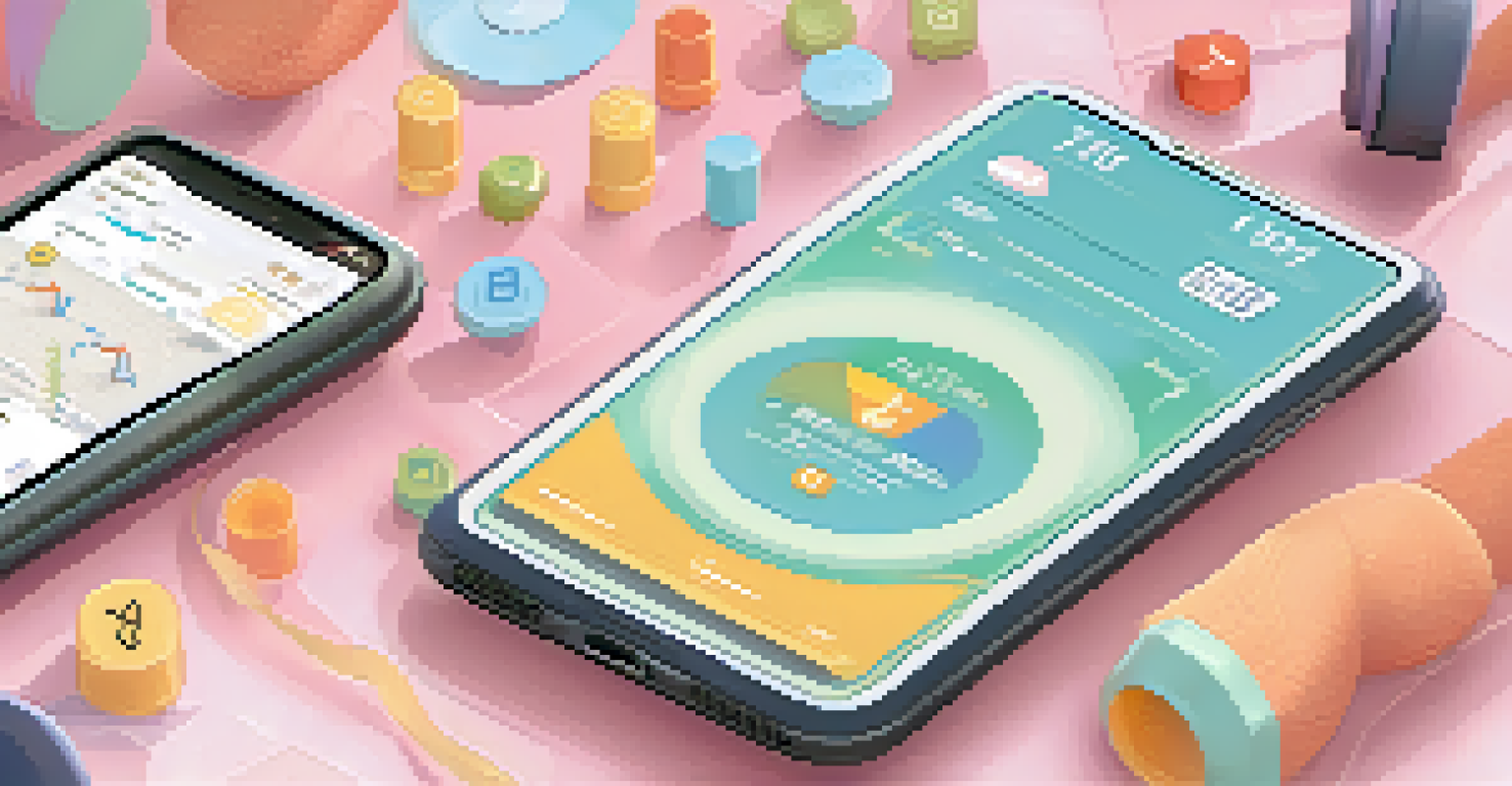Health Gamification: Engaging Users in Wellness Journeys

Understanding Health Gamification and Its Benefits
Health gamification involves using game-like elements in non-game contexts to motivate users toward healthier behaviors. Think of it as turning your fitness journey into a fun quest where every step counts as a point earned. This approach not only makes the journey enjoyable but also fosters a sense of accomplishment and competition.
Gamification is the application of game-design elements and game principles in non-game contexts.
One primary benefit of health gamification is increased user engagement. When individuals feel like they’re participating in a game, their motivation to stick with wellness routines often increases. Imagine logging your daily exercise and seeing a virtual badge pop up—it's a small reward that can make a big difference in maintaining commitment.
Moreover, gamification encourages social interaction, which can be a powerful motivator. Users can compete with friends, share achievements, or even collaborate on challenges, creating a supportive community. This social aspect transforms wellness into a shared journey rather than a solitary task.
Key Elements of Effective Health Gamification
To create an engaging gamified health experience, certain elements are essential. These include rewards, challenges, and progress tracking. Rewards can range from virtual badges to discounts on health-related products, enticing users to reach their goals and stay committed.

Challenges are vital as they push users to step out of their comfort zones. Whether it’s a daily step goal or a weekly workout challenge, setting achievable yet challenging tasks keeps users on their toes. Think of it like a friendly competition where the goal is personal growth rather than just winning.
Gamification Boosts User Engagement
Health gamification transforms wellness into a fun and competitive experience, significantly increasing user motivation and commitment.
Lastly, progress tracking is crucial. Users must see how far they’ve come, which reinforces their commitment and boosts confidence. Just as a video game shows levels completed, a health app should visually present achievements, making the journey feel rewarding and motivating.
Popular Examples of Health Gamification in Action
Several apps have successfully implemented gamification to enhance health and wellness. For instance, Fitbit tracks physical activity and rewards users with badges for reaching milestones. This simple yet effective strategy taps into users' competitive spirit, encouraging them to be more active.
The best way to predict the future is to create it.
Another great example is MyFitnessPal, which gamifies calorie counting and nutrition tracking. Users earn points for logging meals and can even participate in community challenges, fostering a sense of belonging while promoting healthy eating habits.
Lastly, platforms like Zombies, Run! turn exercise into an immersive audio adventure. Users literally run to escape zombies, making workouts feel like an exciting story rather than a chore. This unique blend of storytelling and fitness illustrates the power of gamification in transforming health journeys.
The Role of Technology in Health Gamification
Technology plays a fundamental role in health gamification, enabling the creation of engaging experiences. Wearable devices like smartwatches and fitness trackers collect real-time data, which can be transformed into rewards or challenges. This integration makes it easier for users to track their progress and stay motivated.
Mobile apps also contribute significantly by providing platforms for tracking, sharing, and competing. With features like notifications and reminders, these apps keep wellness goals top of mind. Imagine receiving a friendly nudge to get up and move after sitting for too long—these little prompts can lead to healthier habits.
Key Elements Drive Effectiveness
Incorporating rewards, challenges, and progress tracking are essential for creating engaging health gamification experiences that keep users motivated.
Moreover, advancements in AI and machine learning allow for personalized gamification experiences. By analyzing user data, apps can tailor challenges and rewards to individual preferences, making the experience even more engaging. This level of customization ensures users feel that their journey is uniquely theirs.
Challenges in Implementing Health Gamification
While health gamification has numerous benefits, it also comes with challenges. One significant issue is ensuring that the gamified elements are appealing to a broad audience. What excites one user might not motivate another, so designers must find a balance that resonates widely.
Another challenge is maintaining long-term engagement. Initially, users may be excited by gamified elements, but that enthusiasm can fade over time. To combat this, developers need to introduce new challenges and rewards regularly, ensuring the experience remains fresh and stimulating.
Lastly, there's the risk of users focusing too much on rewards rather than the underlying health benefits. When individuals become overly competitive or fixated on earning points, they might lose sight of their wellness goals. To address this, it’s important to emphasize the intrinsic value of healthy habits alongside external rewards.
Best Practices for Successful Health Gamification
To ensure health gamification is effective, it's essential to keep user experience at the forefront. Start by understanding your audience and their motivations. What drives them? By addressing their specific needs and interests, you can create a more tailored and engaging experience.
Incorporating feedback mechanisms is also vital. Allow users to share their thoughts on challenges, rewards, and app features. This feedback loop helps developers refine the experience and make necessary adjustments, fostering a sense of ownership among users.
Future Trends in Health Gamification
The future will see advanced personalization and immersive experiences through technology, making health gamification more appealing and effective.
Lastly, ensure that the gamified elements align with overall wellness goals. The ultimate aim should be to encourage healthier behaviors rather than just focusing on competition. By creating a balanced approach that prioritizes well-being, you can foster a sustainable and rewarding health journey.
The Future of Gamification in Health and Wellness
As technology continues to evolve, the future of health gamification looks promising. We can expect to see even more advanced personalization through AI, creating tailored experiences that adapt to users' progress and preferences. Imagine a health app that learns your habits and adjusts challenges in real-time—this could revolutionize user engagement.
Moreover, the integration of virtual and augmented reality can enhance the gamified experience. Users could participate in immersive fitness experiences that combine gaming with physical activity, making workouts feel like adventures. This blend of reality and gaming can appeal to a wider audience, especially those who may not typically engage in traditional fitness.

Ultimately, the future of health gamification will likely focus on a holistic approach to wellness. By integrating mental, emotional, and physical health into gamified experiences, we can create comprehensive wellness journeys that resonate with users on multiple levels.